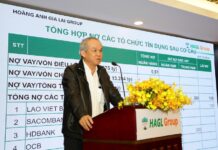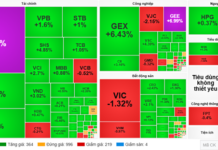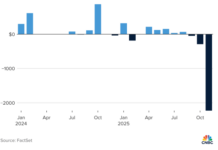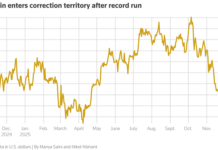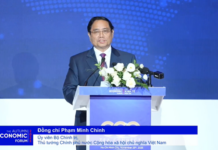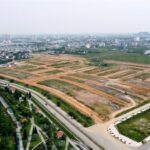
New Opportunities Unveiled by Resolution 68: A Gateway for Aspiring Entrepreneurs
Resolution 68 has unlocked fresh opportunities for countless entrepreneurs, including recent graduates, career shifters transitioning from employment to business ownership, and civil servants navigating job changes due to provincial mergers.
This article is part of a series designed to guide those embarking on their entrepreneurial journey. Our aim isn’t to paint an overly optimistic picture but to lay a solid foundation and offer actionable insights for long-term success.
New Horizons in the Business Cycle
Resolution 68 and recent reforms are propelling Vietnamese private enterprises into a new era marked by enhanced transparency and professionalism.
According to the Ministry of Planning and Investment, over 91,000 new businesses were established in the first half of the year, a 11.8% increase year-on-year. Additionally, more than 61,500 businesses resumed operations, bringing the total to 152,700 enterprises entering or re-entering the market—a 26.5% surge compared to the previous year.
While opportunities abound, the competition is fiercer than ever. Businesses reliant on informal practices and short-term strategies will struggle to survive. We’ve already witnessed companies voluntarily closing not due to losses but because their outdated methods no longer align with the new landscape.
Vision: More Than Just a Slogan

A clear vision is the cornerstone of any successful business
For entrepreneurs, a vision isn’t merely a catchy phrase on a website—it’s the guiding star that aligns your team, reassures employees, and builds customer trust. It answers fundamental questions: What do you offer? Who is your target audience? What market are you targeting? What scale do you aim for? What milestones will define your success?
In reality, even established companies often falter, jumping from one industry to another—bananas today, real estate tomorrow, cattle farming the next day, and rubber the day after. This lack of focus erodes trust and direction.
A 2024 corporate governance survey revealed that businesses, on average, meet only 50% of modern management standards. A vague vision inevitably leads to unclear direction and execution.
A robust vision must clearly define your market scope, target audience, unique value proposition, and long-term aspirations—whether you aim to dominate locally, regionally, or globally.
A Case Study: The Beauty and Cosmetics Industry
Consider the beauty and cosmetics sector, a thriving market valued at $2.3 billion in Vietnam in 2023, with projected annual growth of 5.9% until 2028 (Statista). Within this industry, opportunities are vast:
You could launch a local distribution business, build an online sales team leveraging social media, or establish a nationwide retail chain. Alternatively, you might create a new OEM brand or develop a tech platform connecting customers with beauty stores and brands—becoming a specialized industry hub.
Each path demands distinct capabilities, capital, strategies, and visions. This underscores the importance of introspection and analysis for entrepreneurs to choose the path best suited to their strengths.

Entrepreneurs must carefully analyze and choose the most suitable direction for their ventures.
From Vision to Business Model
Novices often underestimate the complexity of modern business, assuming it’s as simple as sourcing products, running ads, and hiring salespeople. Today’s consumers demand reputable brands, seamless experiences, and transparency.
To build a compelling business model and minimize failure risk, you must rigorously analyze market dynamics, competitors, costs, cash flow, and potential risks. Crucially, your model must align with Vietnam’s unique context—from logistics infrastructure and legal frameworks to consumer purchasing power.
Knowledge, Team, and Community
Opportunities alone don’t guarantee success. Aspiring entrepreneurs must focus on three pillars:
First, knowledge and expertise. Treat business acumen as a skill to be honed. Managing a startup in its early stages differs vastly from steering an established company.
Second, your team. No one succeeds alone. Your founding team must share a unified vision and complementary skills—marketing, operations, finance, and more. Building such a team requires deliberate assessment and effort.
Third, community and mentorship. The startup ecosystem offers unique support through tools, software, knowledge-sharing, moral encouragement, and connections with seasoned entrepreneurs.
In summary, Vietnam stands at the threshold of a new business cycle brimming with opportunities but demanding greater rigor. Success hinges not on trend-chasing but on a clear vision, a viable model, solid knowledge, and a supportive team and community.
Entrepreneurs who establish a strong foundation—a capable team, legal acumen, and community support—will gain a significant head start in this evolving landscape.
Post-Resolution 68: Over 19,000 New Businesses Established Monthly
Following the implementation of Resolution No. 68, over 19,100 new businesses are established monthly, marking a nearly 48% increase compared to the average of the first five months of the year.
Vietnam Opens Gateway for South Korean Startups
With its dynamic economic growth and vibrant startup ecosystem, Vietnam stands as a pivotal market, unlocking new opportunities for Korean startups.












